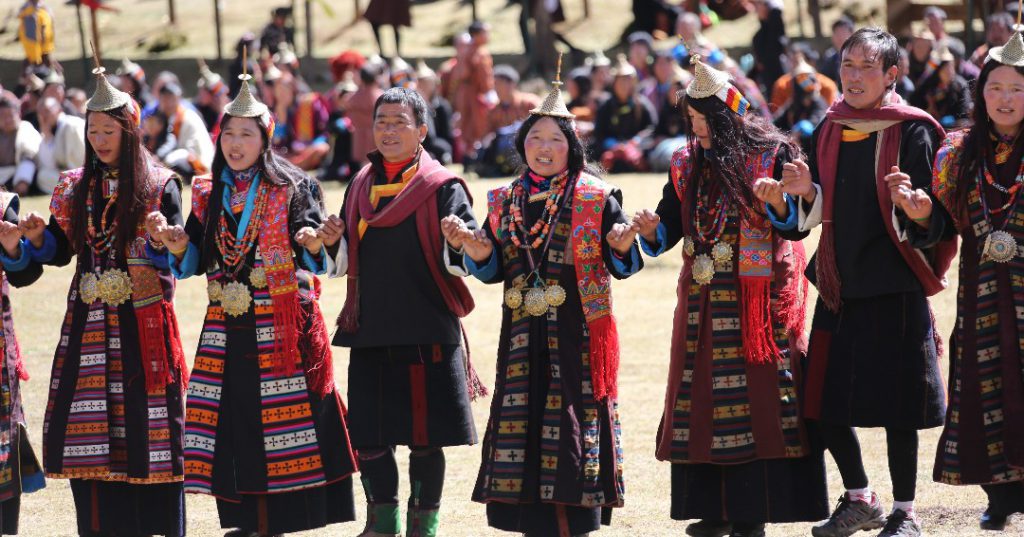People

Bhutan has total population of roughly little over seven hundred thousand and fifty. Bhutan’s population can be categorised into several types based on the region. Sharchop, Ngalop, Lhotshampa, Bumthanpa, and khengpa are some of the major group of people in Bhutan.
The Bhutanese people speak four major languages and several other dialects that have branched out from the major languages. Dzongkha is the national language and is used for official communication and correspondences.
Besides the local language, all Bhutanese literates are also fluent in English. English is also equally used in many official exchanges and communications. Children learn both Dzongkha and English as soon as they are enrolled into schools.
Buddhism and Hinduism constitute the two major religions in the country. Bhutan was introduced to television only in 2000 and hence western culture and modernization is relatively new. Many Bhutanese people also study and work abroad today.
Bhutanese society is closely integrated with a strong sense of community and family values. The sense of community is entrenched in the basic Bhutanese belief of respect to elders, compassion to the young ones and a sense of fellowship, hospitality and solidarity.
The story of the four noble friends impersonated by an elephant, a bird, a monkey and a rabbit is one of the most popular among Bhutanese and is depicted in paintings in many Bhutanese homes. The painting is a symbol of harmony.
The Bhutanese government’s major responsibility lies in providing happiness to the people and any government activity is expected to be geared towards achieving happiness for the people. Over 70 percent of the Bhutanese people live in rural areas and depend on subsistence agriculture. In recent times, due to rapid urbanization, more and more people have been migrating to urban centers in search of better opportunities.
